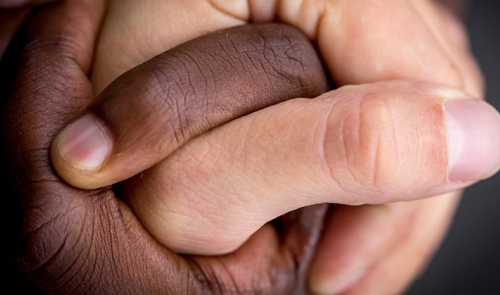Love Across Barriers: In a new book, David Richards explores the connection between our abilities to love and to resist injustice

David Richards, Edwin D. Webb Professor of Law, has long studied the interaction between patriarchy, structural injustice, and resistance movements. In his 20th book, Why Love Leads to Justice: Love Across the Boundaries, Richards examines the private lives and public voices of groundbreaking 20th-century artists and thinkers, and traces the connection between boundary-breaking love and the ability to resist injustice.
Richards tells the stories of relationships that broke the so-called Love Laws, which he defines as the laws that “condemn precisely the loving relationships across the barriers that patriarchy imposes and violently enforces.” In the case of George Eliot (née Marion Evans), Richards writes, she faced the barrier of traditional Victorian marriage. Her extramarital relationship with George Henry Lewes, he argues, led her to write her masterpiece, Middlemarch, a novel that dissects two disastrous Victorian marriages.
The obstacles that composer Benjamin Britten, singer Peter Pears, novelist Christopher Isherwood, and poet W.H. Auden faced as gay men, Richards writes, led them to developing forms of artistic voice that resisted homophobia. “That resisting voice, the voice of people traditionally silenced and marginalized by deep prejudice, only arises in the context of new forms of intimate life which challenge the Love Laws afflicting them,” Richards says.
“These people laid the foundations of the most important resistance movements, of which we are now garnering the benefits,” Richards says. “We should understand where it came from! It’s not an airless invention of intellectuals—although intelligence is a very important part of the story. But it comes from these remarkable stories of their love lives, and their astonishing struggles.”
Civil rights leader Bayard Rustin, first lady Eleanor Roosevelt, and anthropologist Margaret Mead are among the figures whose stories Richards tells. But Richards points to James Baldwin’s life and work as the most dramatic example of how a boundary-breaking relationship can lead to the development of a resisting voice. After a series of disastrous affairs in New York—some with women, but mostly with men, many of whom were abusive to him—Baldwin moved to Paris. There, he met Lucien Happersberger, a white man from Switzerland whom he described as the “love of [his] life.”
Baldwin’s relationship with Happersberger did not last—Happersberger would go on to marry three times—but Richards argues that the experience opened Baldwin’s eyes to the possibility of love as a gay man. “Baldwin broke the Love Laws with a man and a man who was white and from a different culture, but in a way that Baldwin had never experienced before because he had never fallen in love and been loved in this way,” Richards writes.
The revelatory experience of this relationship, Richards argues, led Baldwin to develop the strong ethical voice in his essay, Notes of a Native Son, as well as his artistic voice in his first three novels, Go Tell It on the Mountain, Giovanni’s Room and Another Country. “The thing about Baldwin, which to me is so profound, is that he resists both racism and eventually homophobia together,” Richards says. “It’s key to that astonishing voice of his. [Through Happersberger,] he comes to see things he hadn’t seen before, and this amazing, ethical literary voice emerges.”
Richards credits his work with his long-time collaborator, Affiliated University Professor Carol Gilligan as the inspiration for this book. “I do think feminist voice is a very important part of the gay rights story. And I didn’t really understand it until I met Carol,” Richards says. “This book is really a development of ideas that were first suggested to me by her, and were really worked through in relationship to her.”
As for what lawyers, in particular, can take away from his research, Richards says, “They should have many more friendships and loves across these barriers. It doesn’t have to be sexual. To the extent that there is still self-segregation, that is a tragedy for everybody.”
Posted November 23, 2015



